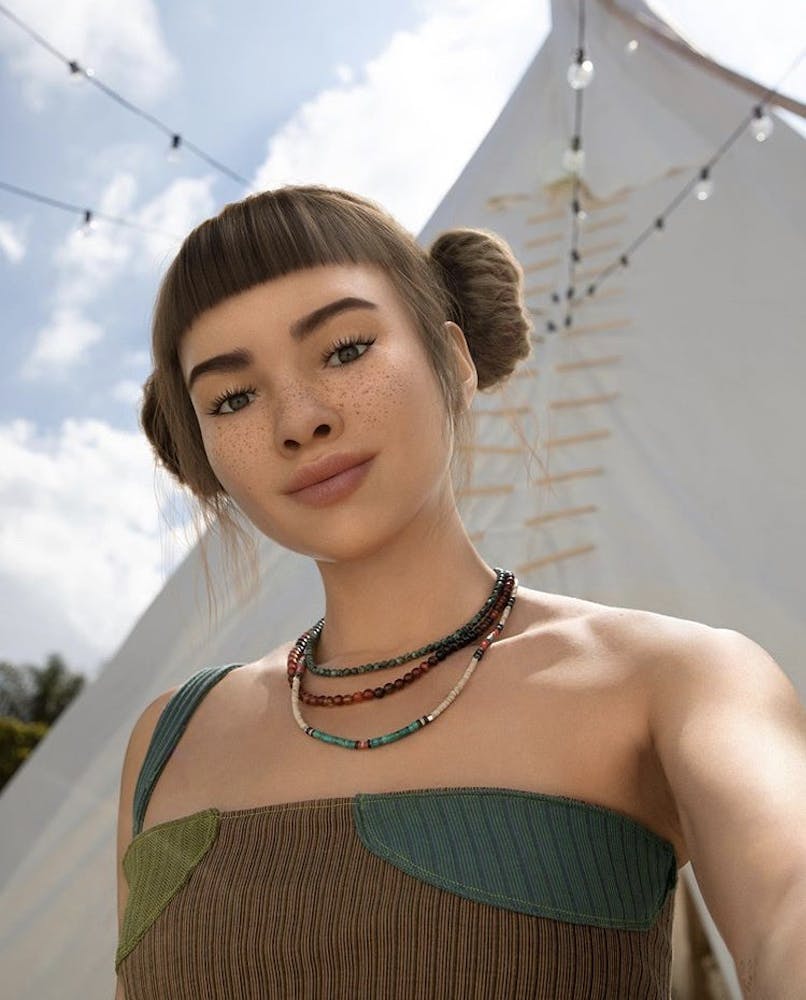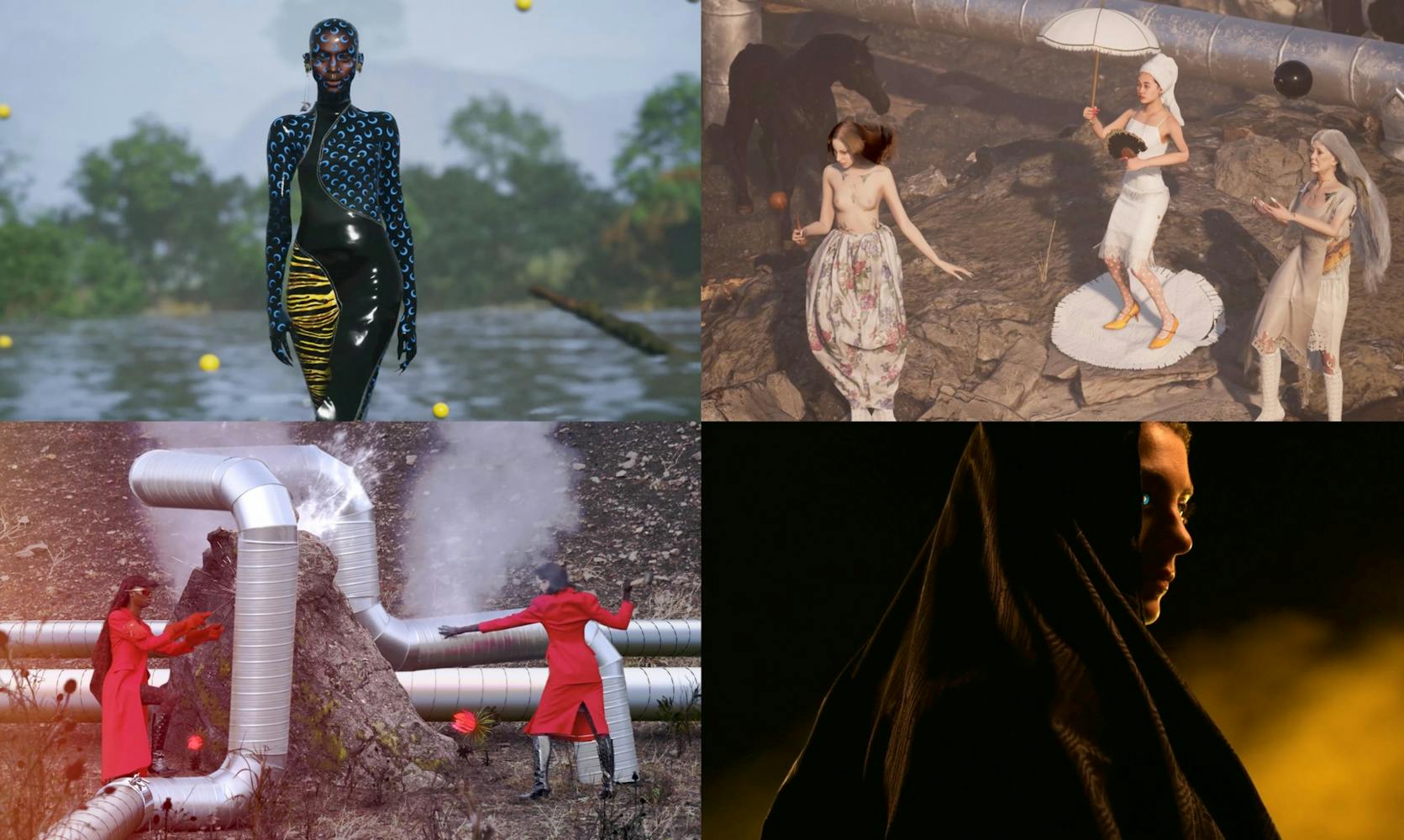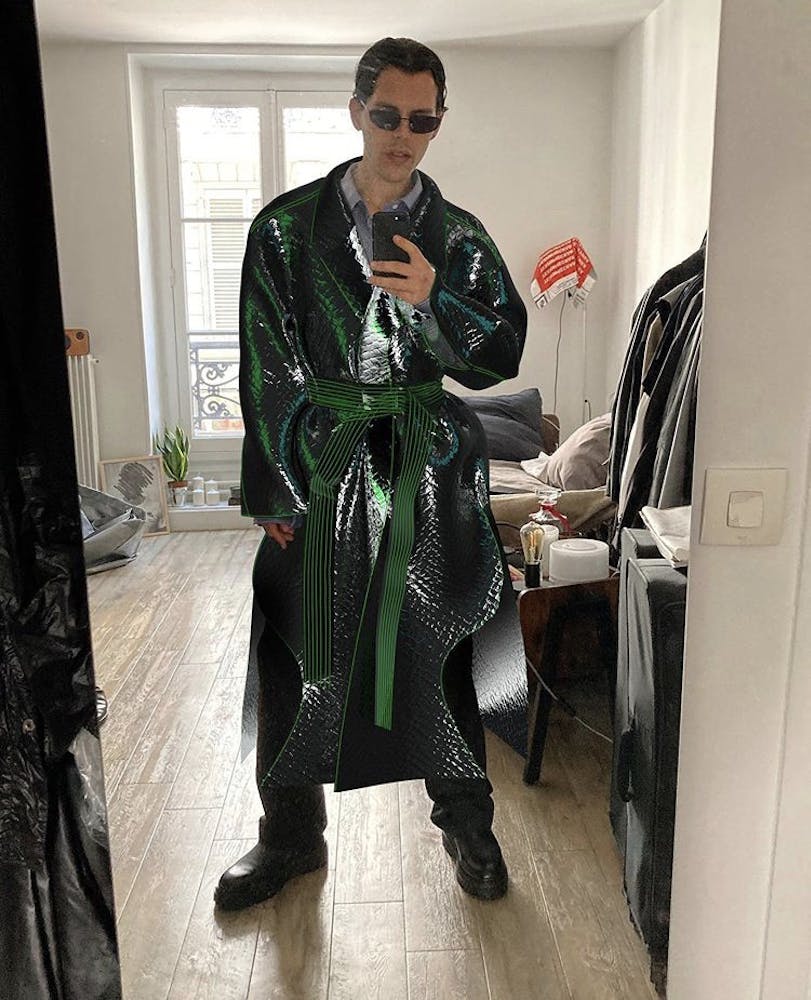Fashion has always been a medium that allows both designers and models alike a physical outlet of expression. As we advance further into the 21st century, pairing the need for expression with the limitless bounds of digital software and the internet has become a must.
In 2020, we have already entered a new space for fashion through Computer Generated Imagery (CGI).
CGI allows the entire fashion industry to be revolutionized, from designers to models to advertisements. By using digital software programs like Adobe, CLO 3D and Daz, 3D artists are now able to explore the medium of fashion outside of physical limits.
With creative software, digital artists are now able to explore fashion as a strict digital medium. This includes rendering digital clothing that can then be edited onto a photograph of a model, or in some cases the creation of digital clothing worn by digital models.
CGI is also enabling a new era of digital relationships between audience and designer. Designers like Marine Serre, a French fashion designer, have begun to explore the new realm of possibilities allowed for by CGI.
Earlier this year Serre collaborated with Actual Objects Studio, an experimental multidisciplinary arts studio. Together they created a CGI movie titled “Marée Noir,” that depicts some of the most notable pieces from Serre’s spring/summer 2020 collection in a CGI form.
Within the film, Serre’s collection is re-envisioned into a digital alien world. The film is cut into four unique acts with new models and new pieces from the collection appearing in each. The landscapes that are depicted follow a linear degradation, starting in a very lush and tropical setting and leading into a barren and desolate environment.
Both collection and film, Serre’s “Marée Noir” is arguably the designer's boldest collection yet.
“Marée Noir,” translated as Oil Spill in English, carries a dark-toned militaristic aesthetic paired with fluid silhouettes and a relief within ethereal white, cream and blue pieces. The entire collection was inspired with climate change in mind, according to Serre.
Outside of the runway, CGI is also beginning to appear across social media platforms. CGI fashion is open to those who do not have expertise in 3D design.
Tribute Brand is a virtual clothing store that provides “contactless fashion.” Customers can pick from a selection of pieces, purchase an outfit and then link several photos of themselves or another person that will be digitally altered to appear to be wearing the outfit. CGI fashion brands are important in the discussion of the direction of fashion as a medium, but also the surrealist effect it has on social media.
With CGI fashion, so too come CGI models. CGI models have been on the rise across social media platforms like Instagram, some even being deemed influencers. One popular CGI model is Miquela Sousa, also known as Lil Miquela.
Get content from The Daily Lobo delivered to your inbox
Lil Miquela currently has 2.4 million Instagram followers and has been featured in various ad campaigns. In 2018, she officially revealed she was a robot, after a staged hacking of her account by fellow CGI model Bermuda forced her controversial identity to be exposed. Lil Miquela has gained a massive amount of attention due to the nature of her CGI identity.
Another CGI model that has gained attention is Shudu, “the world’s first digital supermodel.” Shudu was created by British artist Cameron-James Wilson. Wilson, originally a fashion photographer, is a self-taught 3D artist who is the creator behind Shudu and The Diigitals, a line of CGI models. Shudu has been featured in campaigns for Harper's Bazaar, Fenty Beauty and Balmain.
Wilson’s work, Shudu and Lil Miquela are all examples of CGI models’ introduction to the fashion industry and social media. Their presence raises important questions like how far the trend of CGI models will extend into the future and the future of unrealistic and Eurocentric beauty standards with these models.
Wilson has already received criticism upon his creation of Shudu. In an interview with The New Yorker, Wilson openly stated that his inspiration for Shudu came from the Princess of South Africa Barbie doll.
In an industry that already wildly underrepresents Black and POC individuals and creators, the creation of Shudu was interpreted as a fetishization of a Black woman in the eyes of a white man. Shudu can be used in all aspects of the fashion industry without any part of her identity, features or characteristics being edited by an artist from the Black community. It is here where CGI models specifically begin to take a clear negative turn.
CGI fashion embraces technology and all the resources that come with digital software. It allows for CGI models and fashion to grow with no limit on identity, gender, proportion or standards of beauty. Without the proper assessment of negative aspects within our current physical fashion industry, this new medium will further perpetuate everything that needs to change.
This new medium calls for a large shift in the way artists and designers think. It marks the passing of the physical restrictions of fashion and promotes an environment that survives only through inclusivity and expression.
CGI in fashion marks the beginning of a new artistic movement and the digital revolution.
Joseph McKee is a fashion beat reporter and graphic designer at the Daily Lobo. He can be contacted at culture@dailylobo.com or on Twitter @josephdmckee










